REVIEW – Once upon a time back in E3 2015 a new IP was announced by Ubisoft where you played as a super secret agent with Mission Impossible-like gadgets in a desolate snowy New York City. That game was Tom Clancy’s The Division, a new IP which promised many things, from a vast explorable City filled with content, story, Co-Op missions and most importantly loots. It came out two years later after Destiny 1 and was highly successful for Ubisoft. It was the beginning of the looter shooter craze long after Borderlands 2. One that was started by Destiny 1, and continued by Ubisoft and even EA dipped their toes into the genre.
While I enjoyed the original game (I even reviewed it), and it was one of kind it felt like the IP was spreading its wings. There was a lot of good in the first Division, but also a lot of issues with it where it felt like there was no focused design, and limited in scope. After the game came out and my review went live, a lot of patches were deployed by the developers that felt like they did not know how they want to balance the game. Enemies were too bullet-spongey, the story was not the best, and passable, loot was all over the place in terms of when they could receive it, and even Gear Scores were constantly rebranded. The game also received however massive support for almost three years with constant patches. That game is now in an entirely different state and is a much better game than it was three years ago when it launched.
Cut to 2019 March 15th (12th of you paid for early access) and the sequel is out, but the climate is different in the videogame industry, especially for the genre it represents. Looter shooters have become a bit of a running joke in the industry since Destiny while being successful was a hot mess in terms of storytelling, and content. Division 1 while great had many development issues, and with now Anthem being out in such a state I was not the most optimistic about The Division 2 even after playing the Private Beta. After playing Tom Clancy’s Division 2 for fifty-four hours (and counting), I have still not experienced everything the game has to offer. This is probably one of the most complete looter shooters of this generation, especially considering all the recent failures.
This Ain’t No Zombie Apocalypse!
Seven months after the first game, the United States of America is in shambles due to the Green Poison. Most of the country is being held together by The Division, a secret program activated by The President during the events of The Green Poison outbreak. These units were equipped with the latest high tech gadgets, and the best training the US could offer. Some tried to maintain order, while others became Rogue Agents to further their own cause for glory.
The sequel starts as the player is defending a civilian settlement against an unknown force, when suddenly the entire Division network goes down, and all of the gadgets stop working. This forces the player to retreat to the coordinates sent out by the network, which leads them to Washington D.C. and it is not in a good shape. Just like New York City the Capital is in a state of full-blown war, with many factions trying to conquer the streets. From the anarchist Hyenas who want nothing more than to party, and kill indiscriminately, True Sons which is being led by a rogue General who extorts protection money from settlements, and makes civilians work to death. Then there are the Outcasts led by an asymptomatic carrier of the Green Poison, they blame everyone who was left to die on Roosevelt Island within the quarantine. The endgame has also their own specific factions that reshape the map, which happens when the story is completed by the player.
The map has been replicated like for D.C. with some liberties, but the biomes are different compared to New York City’s snowy streets. It looks a bit more chaotic, with more signs of a struggle compared to the first game. The developers created much more compelling indoor levels, that are fun to fight in – it is no longer just grey walls or a parking lot here and there. You’ll fight through streets, museums, underground World War Two bunkers, CIA bases, and a whole lot of interesting buildings, outside locations. The factions will also try to take over territories, and the gameplay is tied into the actual game world with a lot of activities. Rather than collecting three different resources to upgrade your Base of Operations (which is The White House), you’ll need to complete the main and side mission which tie much more organically into the gameplay.
However while Ubisoft Massive made changes to the overall structure of the game, to make it less like busy work, or a chore to move around the map, the overall story is just below average. Some might even take offence to it, depending on political beliefs. As the game takes this weird stance ever since the first game of A Good Guy with a gun – which I know sounds bizarre – but unlike most games, you will be killing American civilians who after the collapse of the government decides to become… evil? Compared to the first, the second game goes out of its way to make all other factions evil (really hammers down that point), with barely any shades of grey as to why they are your enemy.
You are a Division agent, a hero that every civilian, and basically Judge Dredd that eliminates all opposition to the City’s good. There is even a point where The President of The United States joins the fight with a machine gun in a mission, after that thanks you, and says: Yeah some of my choices will not be popular, and gives you full power to restore order. It is the most Tom Clancy storyline ever, and sadly there is not much cohesion in the story since it concentrates more on the loot. Once the main campaign is completed a new faction appears to try and take over D.C. at which point the endgame begins. There is no nuance to the story, and no repercussions about unlimited power authorized by one person, the game does not question this. Anybody straying from the path (Rogue Agents, Keener, and Division Hunters) always turn to be evil, and you are lawful good. Even if you are still taking orders of a leader of a now-defunct governmental body with no questions asked.
Somehow the supporting characters are less memorable here than in The Division 1, and there is no central villain. While all of the factions have their big bad, you do not interact with them, nor they feel like actual importance to the story. It feels like running down a checklist of killing them, but only because they are there. The only memorable villain in the game was True Sons rogue General who had the most build up throughout the game. Next to him was The Outcast leader, and the reasons she was killing everyone on the mainland, and the Hyenas are just sort of there without any actual leadership (since according to lore they constantly kill each other’s leaders).
So if you wanted to play Division 2 for the story you are going to be disappointed, not to say that some of the side stories are not good, but there is barely an overarching plot. The Echos, side content stories, and even the lore collectable are superb, but the cinematics and the way characters are handled in the main story are disappointing (especially the facial animation during cinematics which is downright creepy). On the flip side though, I still consider this story more coherent than Destiny or Anthem storyline, where all we get are technobabble, ancient aliens, and random superpowers. Here there is no: “No Time To Explain” situation, or the story is relegated to a codex. There are constant audio chatters during missions to give context, collectables that add to the story (Even if only by a little), and it does not insult the player by having most missions be: Stand here and wait for the timer to run out.
Secret Missions … So Many Secret Missions
In fact, Tom Clancy’s The Division 2 has one of the most varied quests design in a looter shooter for a while now. Rather than standing in one place waiting for a timer, you are constantly on the move from one place to another. In one mission you need to plant explosives to stop a munitions train to be transported. In another you have to take over a broadcast station, a third one has you storming The Capitol building with a small army to take back control. Not once did I feel that these main missions were boring, or even short or too long, as the developers were able to mix it up both with enemy placements and the mission locations.
The enemy factions, while being only humans ( do not expect crazy zombies or space aliens), do have a variety to them. In total there are about five factions, and all of them behave differently. The Hyenas will try to rush you and act like a street gang on drugs. The True Sons and Black Tusk factions will try to outflank you at every turn do their militaristic training. Then there is The Underground faction which is creepily silent and wields chainsaws who will appear out of nowhere like Ninjas. Finally, there are the Hunters who are heavily armed tech agents aimed at destroying Division agents. The AI is brutal in all cases, and while you can melt them easily if you know what you are doing, a couple of missteps and you die. As much as we like to consider looter shooters mindless, and just pumping millions of bullets into one enemy, this is not that game. The enemy will actively try to make your life harder. Most enemies will have weak points and will react accordingly, and what I found was that even basic enemies can get staggered. No longer does the case happen where you use your LMG with a hundred rounds and the enemy not even flinch. They will stop, fall back, and stop attacking to compose themselves. Also if an enemy has been damaged sufficiently, they may start to limp to cover rather than running. Little details like these add to the overall gameplay experience.
The upside to that is none of the enemies is as bullet-spongey as Division 1 or any other game. In fact, it feels (as others have pointed out) like an X-Com game, where you need to consider cover, and skill usage. Still, this does not mean that the AI is superb in all cases, and sometimes can act dumb, stop in its tracks, and even shoot from the middle of an open field. A competent AI, but with flaws that disappoint the player.
Side activities have also evolved, and luckily for the better. Instead of doing side activities for resources, you do them for actual loot at the end of each activity. There are more than just three types of activities, compared to Division 1’s Security / Medical and Tech Wing sidequests which were ultimately dull, and did not provide too much fun in the long run. In Division 2, we have a much more robust set of activities to do in the open world. You now have to take over fortifications around the map, you can defend supplies being shipped between two friendly fortifications, or even take supplies when the enemy transports them between enemy forts. There are raiding parties that go and try to take over enemy forts and you can help them. There are propaganda towers that you can disable, public executions to stop, and hostage rescues. There is also territory control where you defeat an encampment. Some of these activities even have Elite versions of them. You also have special secret factions trying to take out Division agents, plus Hunters are back from Division 1, hiding around the map.
The other part of the game that is a big step forward compared to the first Division and many looter shooters is context on the map. What this means is that while in many games will have multiple factions, they rarely interact with each other on the maps, unless it is a specific area or a specific mission for the storyline. Here however this changes, as due to fortifications and every faction has their own specific part of town for them. They fight against each other, and sometimes even high-level enemies will clash.
Sadly not everything is great with the mission and side missions. For one the difficulty balance is all over the place during the campaign. The main and side missions scale with you, so if you like to mess about and grind a lot, the missions will still be around your level and not just be level 10 if you are 20. Which is fine, but when you select the main missions you automatically do it as a “Story” mission difficulty. It is not normal, or hard, and you do not get to select those difficulties the first time. You unlock difficulties once you complete a mission. This is disappointing because I found that with a full group you can blast through all of the missions without any issues.
The open world part in some cases is more difficult, and unpredictable, as events can escalate quickly from a simple fort take over to an Elite patrol going near the fort and joining the fight. While the game can be played Solo, and I did that while completing the campaign, and reaching level 30 it is advisable to join a clan, or find a group for endgame. Otherwise, you will be in a lot of hectic fights where you die due to being overwhelmed in the open world, especially on the endgame.
An AK47, a Silencer and Many More!
Tom Clancy’s The Division 2 handles loot, and its distribution in a way that is finally not insulting. Rather than having to beg the developers to reward us with fun loot, the game does this from the beginning unlike with Destiny or Anthem. There are also gear sets from the very beginning of the game, which can result in you using an armour set that is two or three levels lower than your current level but they provide such buffs that it makes them worth it. There are a lot of weapons and armour types in The Division 2. From shotguns, pistols, rifles, and LMGs pretty much every modern military weapon is in the game. The gear sets make the tactical gameplay more fun, and you can even specialize towards a certain build. This is further enhanced by the fact that once you complete the game once, you get to unlock three specializations with skill trees. Adding more effectiveness to your loot, and also providing you with an ultimate weapon. There is also no shame in using a gear that is lower than your current level or gear score since sometimes effectiveness needed much more than raw level numbers. In fact, most of the gear tries to make the player in a certain way, rather than just hugging the cover and shooting out from it every now and then. There are a lot of build synergies, and when a group plays together it is easy to set up choke points with all the upgrades and weapons.
Everything can be upgraded in the end, not just your weapons and armour, but even skills. As every skill has different slots, you can enhance a skill not just on your cooldown with certain armour sets, but even add damage modifiers to the skills themselves. For instance, you can replace the casing on your drone which will lead to it having more health, or your turret having an even longer use time.
The developers also changed how weapon attachments work this time around, and while some scopes will provide more accuracy they might compromise the stability of a weapon, causing more recoil. Weapon mods are also now simply craftable items, and cannot be picked up in the open world. There is also now only one way to get special bullets compared to the first game where you were able to pick them up from lockers at Base of Operations, and there are no consumables like in the first game. Crafting items and recalibration makes a return to the game, and the process has not changed. The only part that is different is that your crafting bench is now upgradeable. So rather than unlocking higher version of the same blueprint, you need to unlock a higher version of the crafting bench, which is naturally done as you progress through the story.
Sadly the game has the problem that Anthem had that all of the loots look the same, so while an M16 can be ultra-rare you are not going to see any difference on them. Even less than in Anthem. While I can understand that this is due to its modern setting, a bit of variety could have been made for these types of rarity, or at the very least some different markings. You can put different coats of paint on the weapons at least, which is fine, but nothing groundbreaking. However, while Anthem and Destiny do make your characters look cool, here they just look simply militaristic, which is once again due to the setting, but none of the high-level armour looks different enough. It is a real shame and I hope Ubisoft and Massive Entertainment will one day make a fun Scifi game where the look of your character matters in some way. Cause currently having a loot box for clothing is a bit pointless if it all meshes together with your armour.
In the end, while the game provides plenty of loot for every activity completed, and it is not tied to a specific enemy, their design while realistic, is a bit average. The skills themselves they provide and build variety is currently second to none, and you can have a lot of fun with experimenting with them. If you are looking for crazy looking armour sets though, you will not find them here. Unless you just get some weird looking apparels from the store or gain them from in-game loots. However I must say I am impressed by how the developers are not shy of going people loot, and my inventory is almost always full after a long play session.
The Strongholds! Again?
The gameplay of Tom Clancy’s The Division 2 is a full-fledged cover shooter, but at the same time, it is a slow and methodical game. In Division 1 the enemies even after many patches the enemies were just simply bullet sponges. It would take minutes to deal with them, and it was not fun to fight them since they would shake off bullets. In the sequel though, the only massively bullet sponge enemies I encountered are the named bosses, some of the heavily armoured enemies with the Gatling guns, and the walking tanks that Black Tusk deploys. Everything else is completely manageable, and even the enemies that are heavily armoured walk really slowly so those can be disposed of quickly. Also as mentioned above previously, if we do enough damage they get shaken, disabled or disoriented.
This game does seem to have an intelligent design towards difficulty, and not the: We will just put gazillion health into the enemies on higher levels. It is more of a numbers and tactics game, where if you do not manage the enemy direction they will overwhelm you. The friendly AI in this game is thankfully useful, and during Fort, sieges will hold their own. However, it does look a bit clunky when civilians with AK47 will go up against Black Tusk (who are elite soldiers), without any armours or protective gears.
The Division 2 truly begins when you complete the campaign, and you beat all three strongholds of the main factions. Now these Strongholds are a lot of fun, as they provide unique enemies as bosses, and once these are done you go back to The White House, and boom story cutscene, suddenly Black Tusk Invades the map and all-out war breaks out. We are then transported to World Tier 1, in which factions (compared to the base state), actively will try to take over bases, and also attack each other. New side missions open, old missions get repurposed with new narrative content to fit with the Black Tusk faction. Which is great but at this point I was a bit fatigued, mostly because I was playing alone up to the end of the campaign, and also how much content there is in Endgame, and even in the normal game. Black Tusk is the Anti-Division, they are highly disciplined, have high tech gear, equipped with drones, and robot tanks. At this point (after 48 hours) I felt I needed a team, and this is where the endgame shines. You go from base to base trying to retake D.C. from the Black Tusk and also get as much loot so you can get to higher world tiers, where there are more rewards. The map will show where enemy forces are heading and to which base so you can cut them off, and even take their supplies if you encounter a resource patrol. The Map will only hide easter eggs, echoes, collectables, and The Hunters. Everything else is out in the open, which to some might be negative, but for me, it made it easier and the team to decide where to go.
The Dark Zone and the Bounty System makes a return with a couple of changes. The Dark Zone’s entrances are now guarded by Sentry Turrets so it is harder to grief new players. While the Bounty System only seems to take Intel (Currency to activate bounties), if you actually complete them. So you can try as much as you want because those bounties are tough.
The specializations also add another layer and currently, there are three of them, but during the first year, there will be more added at a later date. All specializations receive a skill tree which buffs certain aspects of a character, and also an ultimate weapon aka Signature Weapon. There are no Signature Skills, but that is not a big loss since it feels great to use a grenade launcher to kill swaths of enemies. The Demolitionist gets a grenade launcher, The Survivalist an Explosive tipped Crossbow, and the Sharpshooter a really destructive sniper rifle. Ammo is also plentiful for these weapons, and you are encouraged to use them. Which is again a nice design philosophy compared to other RPG and looter shooters where you have to wait a long time to use a special weapon again. The only wait time you have is the actual skills like the drones and shields, but by endgame, you have so many buffs for them for cooldown you do not wait three or four minutes for them to recharge.
Tom Clancy’s The Division 2 has an addictive “just one more” quest/event gameplay loop. The map and events are placed in such a way that it is always easy to go over to the next one without any big downtimes. It is able to do what many looter shooters failed to do. Make a compelling endgame where the enemy can also get cut down easily by the player, and also rewards the player. Sure it is great to have a giant space monster as an epic foe… but if you got to keep hitting that foe for half an hour in the same weak spot, that is no longer fun, no matter how fantastical or well designed the enemy looks.
The Sounds and Sights of D.C.
The Division 2 looks great on the Xbox One X, in most instances. The open world while looks more colourful and fun to traverse, does have its limitations, and this console generation is clearly having issues with long open spaces with intricate AI interaction. It looks superb for indoor environments, and the lighting is also great, with the scenery being so varied even if it is a modern day setting. Yet it only looks good on the PC at this point. On the base consoles from what I saw it looks unbearable, and texture pop-in is now starting show up quite visibly. The art style is the same, and it looks good on PC, and even on PS4pro, and Xbox One X. It just feels that it is straining the system for the most part. There are barely any loading screens besides fast travel, and some indoor locations have a quick fade to black when entering an elevator. You can run from one part of the map to the other without experiencing any slowdown. I am still interested though if Ubisoft will provide a big patch for this when the next generation consoles come out, to see the difference in graphics.
The sound design is okay, and every weapon sound seems to be realistic, but one thing I have to mention is that the game feels muted in terms of sound mixing outside of combat. Besides the gunfire and heavy boot steps, there’s not much else of an ambient sound for the player to listen to. It felt weird, as when you are in combat the music starts and it is one of the best soundtracks of 2019 during combat. Still a bit more variety in the environmental sound would have worked. Oh and the thunderstorm/rain sounds too fake and cheap. All in all the graphics and sound is almost the same as the first game, but with new and interesting design choices. Some were good, and a step forward, some were bad, and good use a bit more work.
Nuke Those Bugs!
While the launch was smooth in terms of server issues, and disconnections (much less compared to the first Division, and especially to Anthem), there were and still quite a few bugs. Low-resolution textures and pop-ups as mentioned previously occur even on the upgraded consoles. Sometimes events will bug out, and you cannot progress with them so you will have to leave them. For instance, I would have a hostage rescue situation where I cleared out the location, opened the door for the hostage to be free and the open world mission would not end. Another bug that happened frequently during my playthrough was the territory control open world mission, where once clearing the objective you would have to open a gear stash, but you would not be able to as the stash would not spawn. Also, the ending information pop-up still keeps happening for me.
The biggest bug there was during launch period where for about a week you would have the skills reset after three or four seconds, and barely able to use them. So I pretty much completed the campaign without using those skills which made some encounters maddening. Luckily this is fixed, but there are still a few issues for the developers to iron out. A couple of sound bugs exist, where the reload sound does not play, and there is a headshot sound bug that does not play when you make that satisfying headshot kill.
Also, matchmaking in its current form is a bit problematic, as not many people will join not just basic sessions, but even missions you would be waiting. I believe it has something to do with the way matchmaking is structured, as people will not join your session but you will have to join others.
It was not a rocky launch like most games, but it still has its fair share of issues.
A Massive Leap For GAAS
I enjoy this game for all its faults, as unlike most GAAS titles, or looter shooter titles (Free or Payable) where the promise of content is offered, but the base game is a shell. Tom Clancy’s The Division 2 is none of that, and it is packed full of content that I and many others get to enjoy from the outset. Packaged in the box, no waiting, and no insulting roadmaps. It has its faults, mostly in the story department, but the core gameplay is solid, with so many things to do (which are not boring and do not consist of standing around), and so many ways to do it that you will have a lot of fun in this game without feeling taken for a ride with promises. There are loot boxes, but they do not impact the gameplay in any shape or form. In fact, the game seems to give out currency after certain events
With a raid coming soon, and a new stronghold, plus even more content announced for free for the first year – Tom Clancy’s The Division 2 is a must-have.
-Dante-
Pro:
+ Lots of loot, and customization
+ Long story, a huge amount of things to do that never get boring
+ Interesting enemies, and lore
Against:
– Story is just about average
– Loot design is a bit generic
– Graphics and sound have a few issues
Publisher: Ubisoft
Developer: Ubisoft Massive Entertainment
Genre: Action, Role-playing
Release date: March 15, 2019
Tom Clancy’s The Division 2
Gameplay - 9
Graphics - 8.4
Story - 7.6
Music/Audio - 8.5
Ambiance - 9.3
8.6
EXCELLENT
A fun looter shooter with content that makes giant leaps compared to its competition. Well done Ubisoft.

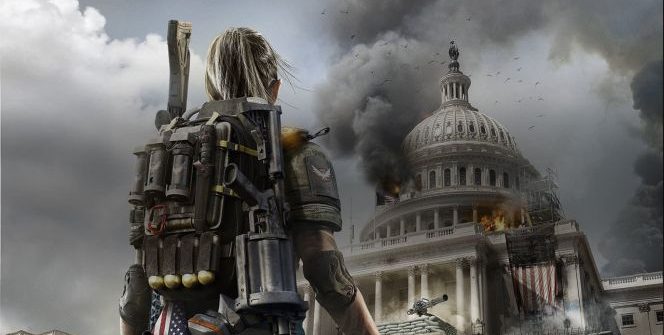



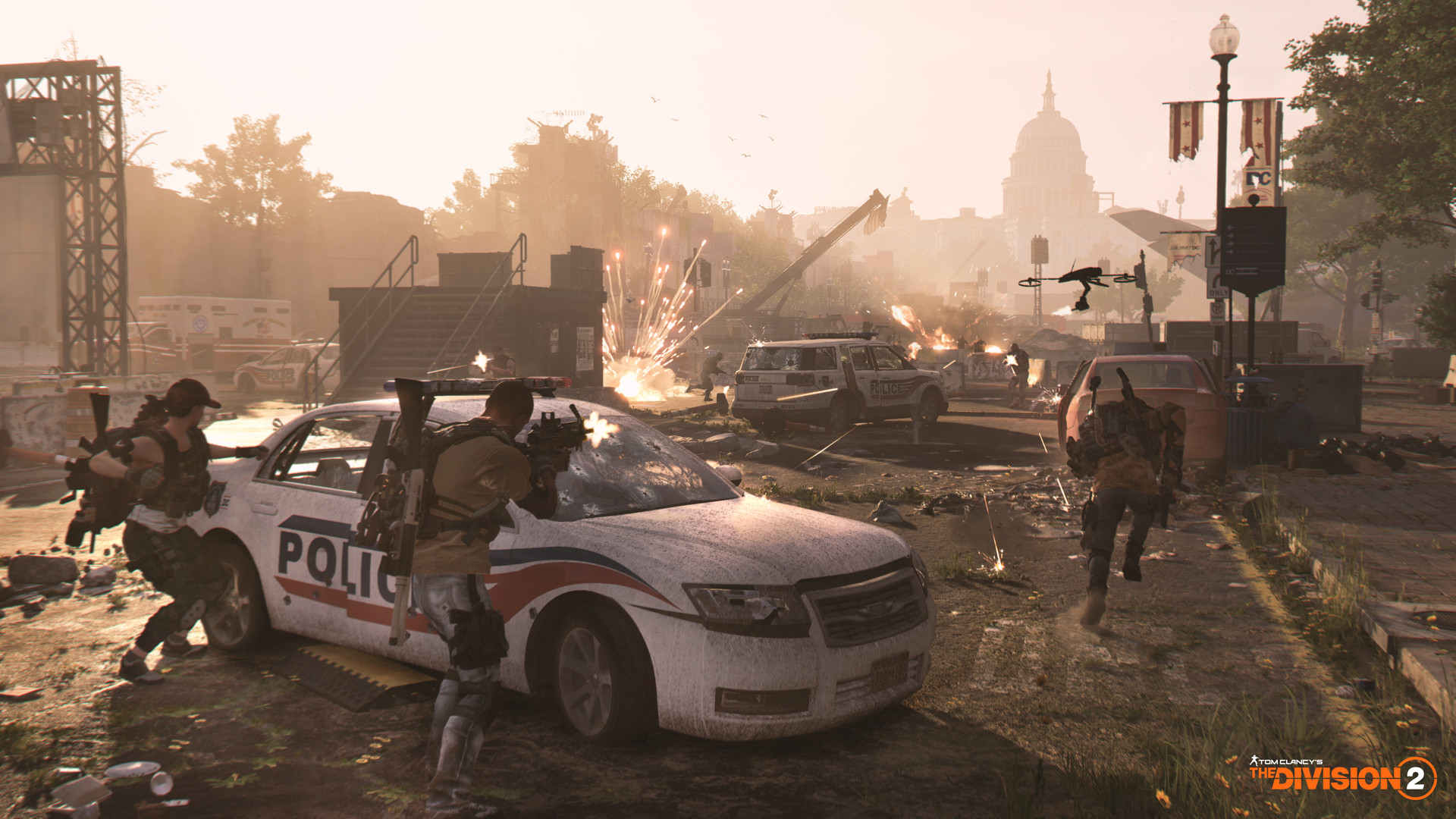
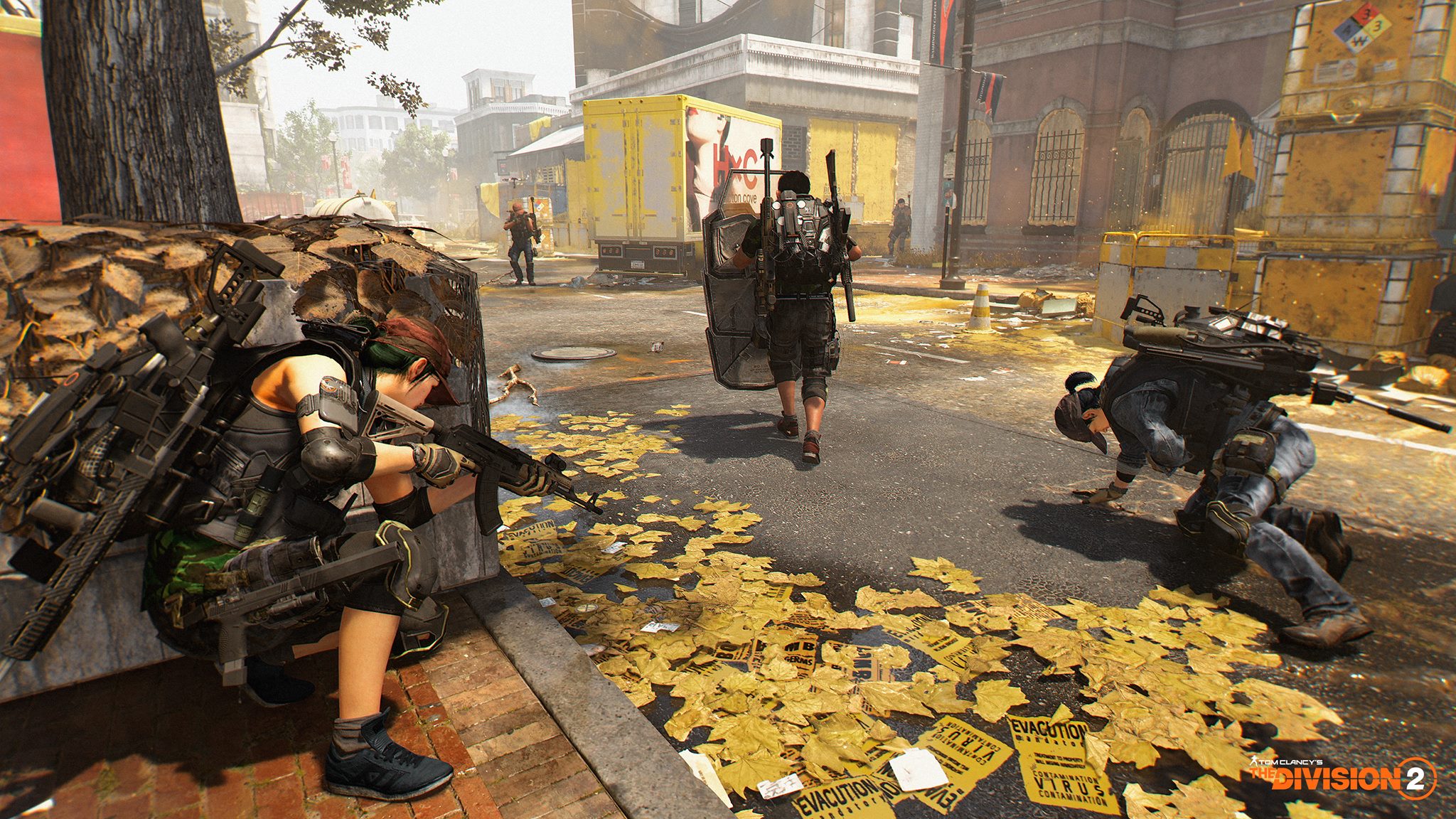

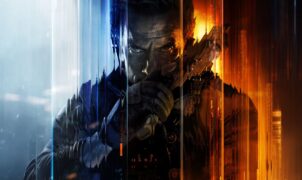
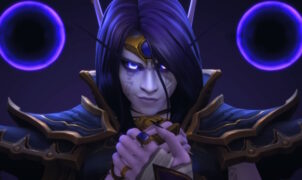


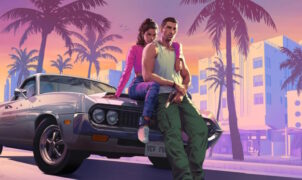





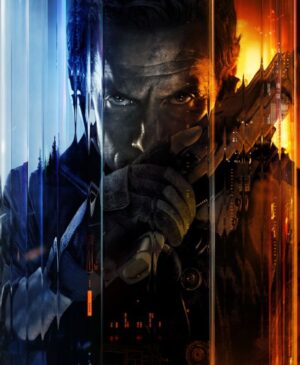


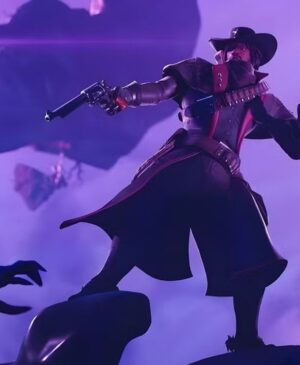
Leave a Reply